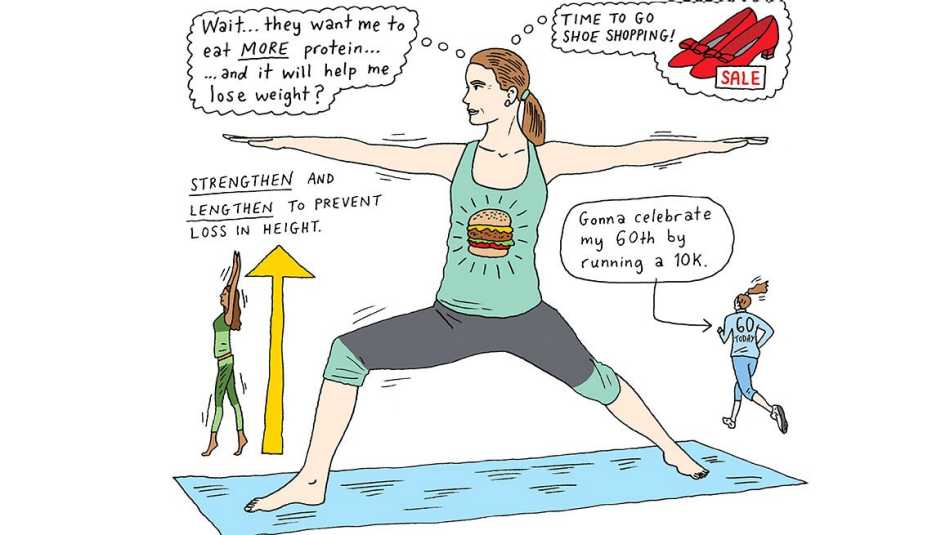AARP Hearing Center


The good news in your 50s: Your muscular endurance is still robust.
The reality check in your 50s: Your weight will probably peak.
Here are a few changes to watch out for.
- It’s time to embrace the power of protein. On average, people lose about 30 percent of their muscle power between ages 50 and 70. But this doesn’t have to be; inactivity and too little protein hasten the process. Keep muscles healthy with regular strength training — a smart step that 79 percent of people in their 50s skip. And try eating more protein at breakfast and lunch. Most people over 50 get the majority of their protein at dinner. Bumping up your intake a little and spreading it throughout the day — oatmeal with almond butter at breakfast, a tuna sandwich at lunch — could help preserve muscle mass and strength, research suggests. Muscle matters: By making it a priority, you’ll cut your risk for diabetes, heart disease and frailty, and preserve your independence in the decades to come.
- Exercise if you want to lose weight. In a recent Wake Forest University study of 249 older overweight adults, those who cut 300 calories per day lost 12 pounds, two of which were muscle. But those who cut the 300 calories and also did strength training lost nearly 20 pounds in the same time frame, and more of it came from pure fat.
- But still cut those calories. The average 50-year-old consumes 285 more calories a day than our grandparents did at this age. If willpower isn’t enough to prompt your weight loss, try acceptance-based therapy. Skipping ice cream and being sure to exercise really aren’t fun, but they’re essential for reaching goals that matter the most to you. This attitude shift helped dieters drop 36 percent more weight, and keep it off longer, in a recent study of 190 overweight men and women, average age 51.
- Another incentive to exercise: You’ll preserve bone density. Thanks to declining estrogen at menopause, women’s bones thin fastest between ages 50 and 60 — losing as much as 15 percent of the dense outer layers that guard against fractures and more than 30 percent of the honeycomb-like inner layer. About half of all women over 50 will break a bone someday because of this. Men also begin losing bone density, as the body’s never-ending cycle of microscopic bone breakdown and reconstruction shifts gears. Prevention? Get your daily calcium quota (preferably from food; one major new analysis has found that supplements don’t prevent fractures).
- Your skull is shifting. The bones of the skull change as we age. Eye sockets get bigger, jaws become more pronounced, and facial bones thin. These changes happen to both sexes but generally affect women slightly earlier than men. Don’t worry; it’s not a problem.

































































More on Health
Your Looks at 50+
What to expect for your hair, skin and nails